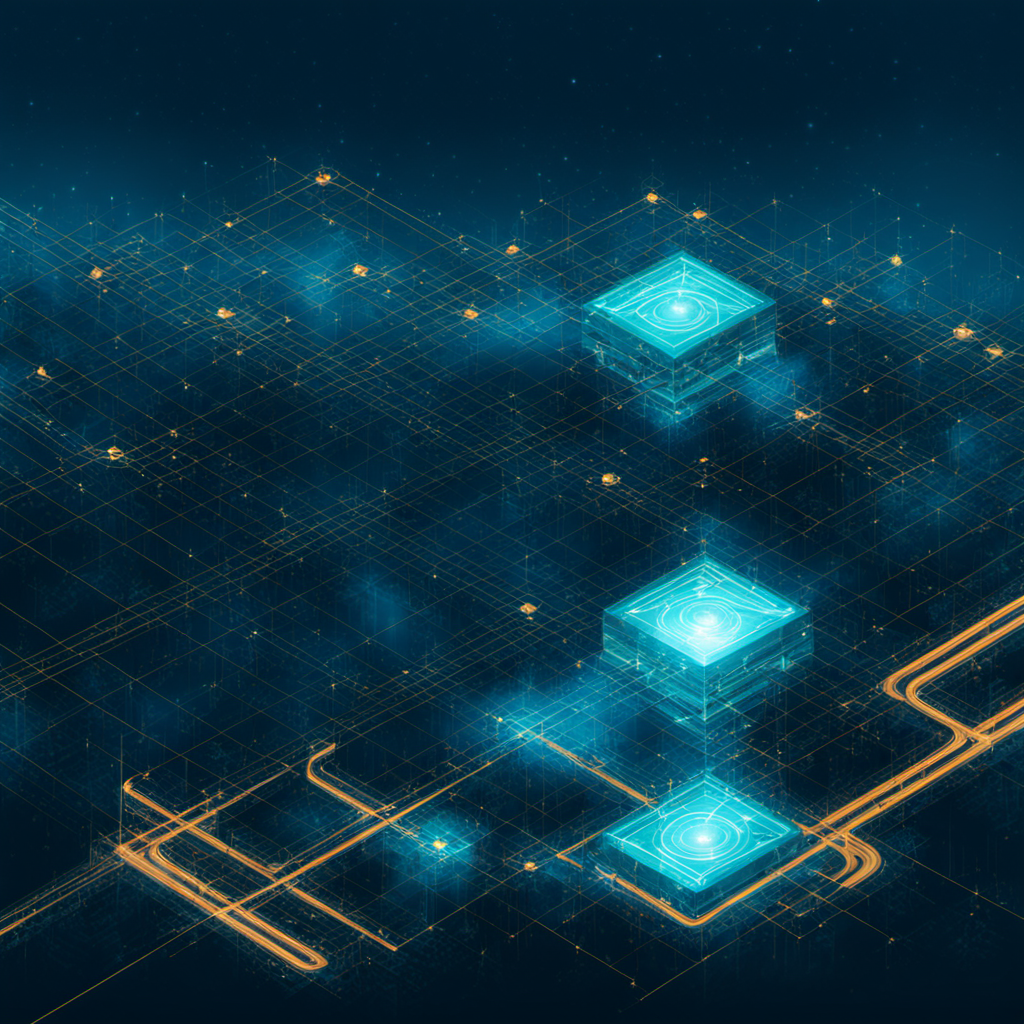Inference and the New Geography of Intelligence: Why Running AI Models Matters More Than Training Them
Explore how AI inference is becoming the defining resource of the knowledge economy, reshaping geopolitics, energy infrastructure, and the future of computational power.

Inference and the New Geography of Intelligence
In the industrial age, power belonged to those who controlled oil and manufacturing. In the AI age, it belongs to those who control inference — the ability to run vast models that transform stored intelligence into action. The world's next great economic divide may not be between rich and poor, but between those who can afford to think at scale and those who cannot.
This isn't hyperbole. Every API call you make, every chatbot conversation, every automated decision in a supply chain or hospital is an act of inference. While the headlines celebrate training breakthroughs — GPT-5, Claude 4, Llama 5 — the real battle is happening in the infrastructure that runs these models billions of times per day. Training creates the model once. Inference uses it forever.
The Real Resource of the 21st Century
Training models makes headlines, but inference runs the world. Consider the economics: training a frontier model like GPT-4 costs an estimated $100 million. Running it for a year across millions of users costs billions. The ratio is asymmetric and accelerating.
Every chatbot conversation, autonomous decision, and robotic operation consumes inference — compute, energy, and bandwidth that are fast becoming as strategic as oil once was. Unlike training, which happens once in concentrated bursts, inference is continuous, distributed, and growing exponentially. By 2030, some projections suggest inference workloads will consume more compute than all training combined.

The nations and companies that can deliver inference cheaply and securely will set the terms of the new digital economy. And today, the United States has a lead: abundant energy, advanced chip design through NVIDIA and AMD, mature cloud infrastructure from AWS, Azure, and Google Cloud, and a capital ecosystem willing to fund data center expansion at unprecedented scale.
But this is not a permanent advantage. Inference economics favor those who can pair three things: low-cost energy, efficient silicon, and proximity to users. The first two are becoming global; the third is inherently distributed.
America's Advantage — and Its Limits
The U.S. is currently the most efficient place to run large-scale inference workloads. Its combination of low energy costs in states like Texas and Washington, mature data center ecosystems, and software dominance through frameworks like PyTorch and TensorFlow makes it the core of global AI operations. Tech giants have spent billions constructing inference clusters that can handle trillions of daily requests with sub-100ms latency.
But this advantage won't go uncontested. China is scaling domestic fabrication through SMIC and investing heavily in inference-optimized chips. The EU is investing in sovereign cloud initiatives and linking data centers directly to renewable energy grids. India is positioning itself as a hub for cost-effective inference, leveraging cheap solar power and a massive developer base. The Gulf states, flush with oil wealth and sunshine, are building AI cities that connect compute directly to renewable grids.

The critical insight is this: while training requires cutting-edge H100 GPUs and massive parallel clusters, inference increasingly runs on smaller, more efficient chips. Quantized models, distillation techniques, and edge computing are democratizing access. A model that once required a datacenter can now run on a laptop. This shift fundamentally changes who can participate in the inference economy.
Data Centers as Digital Refineries
Data centers are the new industrial plants — not producing steel or fuel, but cognition. Each inference cluster transforms energy into intelligence, powering the world's automation. A modern data center housing 50,000 GPUs can process billions of inference requests per day, effectively serving as a cognitive factory for everything from medical diagnostics to financial trading.
Yet the same physical constraints that once defined oil geography — access to land, power, and regulation — now shape the geography of thought. Oregon and Iceland attract data centers with cheap hydroelectric power. Singapore builds them despite high costs because of proximity to Asian markets. Ireland hosts them for European tax optimization.
As energy transitions to renewables and chips become more efficient, inference will gradually localize. Frontier-scale reasoning — the kind that requires massive models for breakthrough research or complex simulations — may stay in super-clusters. But most applications will run closer to the user, embedded in everyday devices and local clouds.
This creates a bifurcated future: centralized mega-clusters for frontier intelligence, distributed edge networks for daily operations. The economic moat lies not in either alone, but in the orchestration between them.
The Open Source Counterforce
While proprietary models from OpenAI, Anthropic, and Google capture attention, an open-source revolution is quietly reshaping inference economics. Meta's Llama series, Mistral AI's efficient models, and projects like Falcon demonstrate that competitive intelligence no longer requires exclusive access to centralized infrastructure.

Open-source models enable local inference, breaking the dependency on cloud providers. A startup in Bangalore can run Llama 3.3 on-premise for a fraction of the cost of API calls to GPT-4. A European hospital can keep patient data sovereign by running medical AI locally. A developer in Lagos can build products without sending data to San Francisco.
This matters geopolitically. Nations wary of dependence on U.S. cloud infrastructure can build indigenous AI ecosystems. The EU's AI Act explicitly encourages local deployment. China's focus on self-sufficiency drives massive investment in domestic inference capacity. Even allied nations are hedging their bets.
The result is a more plural AI landscape where inference capacity is distributed, not concentrated. This doesn't eliminate advantages — NVIDIA still dominates chip design, English-language models still lead in capability — but it makes the gap bridgeable. In a world of open weights and efficient inference, computational sovereignty becomes achievable.
Human-in-the-Loop Workflows: The New Division of Labor
Automation doesn't erase human roles; it redefines them. AI systems can already handle pattern recognition, data analysis, diagnostic suggestions, and content generation. But humans remain essential for interpretation, ethical judgment, creative direction, and contextual understanding.
The future of work looks less like replacement and more like augmentation. Doctors won't disappear; they'll oversee AI systems that pre-analyze scans and suggest treatments, focusing their expertise on edge cases and patient communication. Engineers won't stop designing; they'll direct AI assistants that generate options, run simulations, and optimize solutions. Designers won't become obsolete; they'll curate AI-generated variants and apply aesthetic judgment at scale.
This human-AI collaboration could democratize access to expert knowledge worldwide, provided inference costs remain low enough for everyone to participate. A rural clinic in Kenya with local inference capability can access diagnostic AI as sophisticated as any hospital in Boston. A solo developer in Vietnam can leverage coding assistants as powerful as those used at Google.
But this vision requires infrastructure. If inference remains expensive and centralized, the cognitive divide will mirror existing inequalities. If it becomes cheap and distributed, it could be genuinely leveling.
Compute Capitalism and Digital Inequality
Compute is capital. Whoever owns the infrastructure for large-scale inference earns rent on cognition itself. That's the new layer of capitalism emerging — compute capitalism — where the means of thinking are monetized like the means of production once were.

OpenAI charges per token. AWS charges per GPU-hour. Every inference request is a microtransaction in the attention economy. As AI becomes ubiquitous, these rents compound. The owners of inference infrastructure become the landlords of intelligence, extracting value from every cognitive operation.
But monopolies on compute are unstable for structural reasons. Unlike physical factories, inference infrastructure can be replicated anywhere with power and silicon. Unlike proprietary algorithms, model weights increasingly leak or get released. Unlike network effects that lock in social platforms, inference services compete on price and latency.
This creates countervailing forces. Open-source models erode pricing power. Distributed energy grids enable regional competition. Efficient architectures reduce barrier to entry. Over time, the economics of intelligence will balance between global platforms offering convenience and local autonomy offering control.
The question is whether this balance arrives fast enough to prevent concentration. If a handful of companies monopolize inference before alternatives mature, they'll shape the knowledge economy for decades. If distributed infrastructure develops in parallel, power diffuses.
Ethics and the Global Cognitive Divide
The risk isn't that AI replaces humans; it's that nations without cheap inference become dependent on those who have it. A digital divide based on computational power could reinforce existing inequalities in education, healthcare, research, and economic opportunity.
Consider what's at stake: nations with local inference can build indigenous industries, protect data sovereignty, customize models to local languages and culture, and maintain strategic autonomy. Those without must rent intelligence from abroad, sending data across borders, accepting foreign priorities, and remaining perpetually behind the capability curve.
This is already happening. Wealthy nations build hyperscale data centers. Middle-income nations negotiate with cloud providers. Low-income nations remain dependent on expensive API access. The gap in cognitive infrastructure mirrors the gap in physical infrastructure from previous eras.
The challenge for this century is ensuring that inference — like knowledge itself — becomes a shared utility rather than a gated privilege. This requires international cooperation on open models, technology transfer for efficient hardware, investment in distributed energy infrastructure, and policies that prevent monopolization.
It's not a given outcome. But it's an achievable one if recognized as a strategic priority.
Conclusion: Shared Intelligence over Central Power
Inference is the invisible infrastructure of the modern world. It will determine who leads, who lags, and who participates in the next phase of globalization. The decisions made today about data centers, chip exports, model licensing, and energy infrastructure will shape the distribution of cognitive power for generations.
The United States will remain a key player, leveraging its advantages in capital, technology, and energy. But it won't be the only one. As compute decentralizes and sovereignty rises, the future belongs to those who build systems that distribute intelligence — not hoard it.
This isn't idealism; it's realism. Concentrated inference power is brittle. It faces technical limits (latency), political resistance (sovereignty concerns), and economic competition (open source). Distributed inference is resilient. It scales with local resources, adapts to regional needs, and compounds through network effects.
The geopolitics of intelligence will be multipolar, not unipolar. The economics of inference will favor efficiency over scale. And the societies that thrive will be those that ensure their citizens can think at machine speed without asking permission from distant data centers.
Power, in the end, won't come from thinking alone, but from where the thinking happens — and who gets to share in it. The question before us is whether we build infrastructure for extraction or infrastructure for access. The answer will define the knowledge economy for the remainder of the century.
About the Author: Daniel Kliewer writes about AI infrastructure, local-first development, and the economics of computation. Find more at danielkliewer.com.